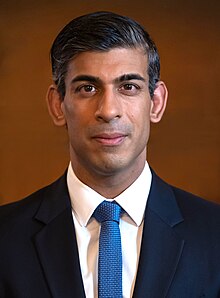
The chancellor of the Exchequer, often abbreviated to Chancellor, is a senior minister of the Crown within the Government of the United Kingdom, and head of His Majesty's Treasury. As one of the four Great Offices of State, the chancellor is a high-ranking member of the British Cabinet.

His Majesty's Treasury, occasionally referred to as the Exchequer, or more informally the Treasury, is a department of His Majesty's Government responsible for developing and executing the government's public finance policy and economic policy. The Treasury maintains the Online System for Central Accounting and Reporting (OSCAR), the replacement for the Combined Online Information System (COINS), which itemises departmental spending under thousands of category headings, and from which the Whole of Government Accounts (WGA) annual financial statements are produced.
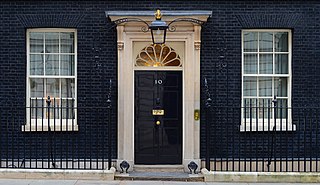
10 Downing Street in London is the official residence and office of the Prime Minister of the United Kingdom.
In the United Kingdom, there are several Secretaries to the Treasury, who are Treasury ministers nominally acting as secretaries to HM Treasury. The origins of the office are unclear, although it probably originated during Lord Burghley's tenure as Lord Treasurer in the 16th century. The number of secretaries was expanded to two by 1714 at the latest. The Treasury ministers together discharge all the former functions of the Lord Treasurer, which are nowadays nominally vested in the Lords Commissioners of the Treasury. Of the Commissioners, only the Second Lord of the Treasury, who is also the Chancellor of the Exchequer, is a Treasury minister.

The leader of the House of Lords is a member of the Cabinet of the United Kingdom who is responsible for arranging government business in the House of Lords. The post is also the leader of the governing party in the House of Lords who acts as the government party chairperson in the house. The role is always held in combination with a formal Cabinet position, usually one of the sinecure offices of Lord President of the Council, Lord Keeper of the Privy Seal or Chancellor of the Duchy of Lancaster. Unless the Leader is also a departmental minister, being Leader constitutes the bulk of their government responsibilities, but it has never been an independent salaried office. The Office of the Leader of the House of Lords is a ministerial department.
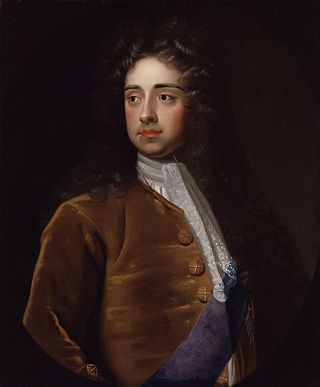
The Lord High Treasurer was an English government position and has been a British government position since the Acts of Union of 1707. A holder of the post would be the third-highest-ranked Great Officer of State in England, below the Lord High Steward and the Lord High Chancellor of Great Britain.
In the United Kingdom there are at least six Lords Commissioners of His Majesty's Treasury, serving as a commission for the ancient office of Treasurer of the Exchequer. The board consists of the First Lord of the Treasury, the Second Lord of the Treasury, and four or more junior lords acting as assistant whips in the House of Commons to whom this title is usually applied.

The Conservative government of the United Kingdom of Great Britain and Ireland that began in 1866 and ended in 1868 was led by Lord Derby in the House of Lords and Benjamin Disraeli in the House of Commons.
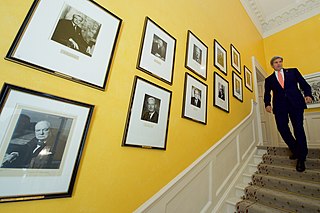
The article lists the records of prime ministers of the United Kingdom since 1721.
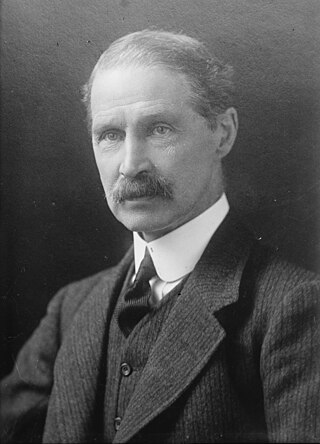
The Conservative Government of the United Kingdom that began in 1922 and ended in 1924 consisted of two ministries: the Law ministry and then the first Baldwin ministry.

Stanley Baldwin of the Conservative Party formed the second Baldwin ministry upon his reappointment as Prime Minister of the United Kingdom by King George V after the 1924 general election. His second ministry ended following the so-called "Flapper Election" of May 1929.
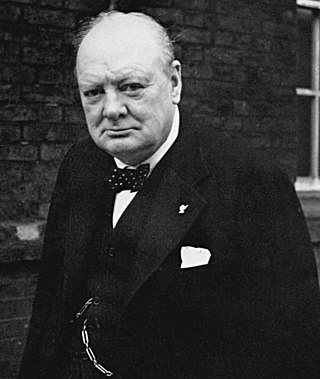
Winston Churchill formed the third Churchill ministry in the United Kingdom following the 1951 general election. He was reappointed as Prime Minister of the United Kingdom by King George VI and oversaw the accession of Queen Elizabeth II in 1952 and her coronation.

The Conservative government of the United Kingdom that began in 1957 and ended in 1964 consisted of three ministries: the first Macmillan ministry, second Macmillan ministry, and then the Douglas-Home ministry. They were respectively led by Harold Macmillan and Sir Alec Douglas-Home, who were appointed by Queen Elizabeth II.
A grace-and-favour home is a residential property owned by a monarch by virtue of his or her position as head of state and leased, often rent-free, to persons as part of an employment package or in gratitude for past services rendered.

The Liberal government of the United Kingdom of Great Britain and Ireland that began in 1905 and ended in 1915 consisted of two ministries: the first led by Henry Campbell-Bannerman and the final three by H. H. Asquith.

The Canningites, led by George Canning and then the Viscount Goderich as First Lord of the Treasury, governed the United Kingdom of Great Britain and Ireland from 1827 until 1828.

Margaret Thatcher was Prime Minister of the United Kingdom from 4 May 1979 to 28 November 1990, during which time she led a Conservative majority government. She was the first woman to hold that office. During her premiership, Thatcher moved to liberalise the British economy through deregulation, privatisation, and the promotion of entrepreneurialism.
The position of Prime Minister of the United Kingdom was not created as a result of a single action; it evolved slowly and organically over three hundred years due to numerous Acts of Parliament, political developments, and accidents of history.

In the United Kingdom, the Great Officers of State are traditional ministers of the Crown who either inherit their positions or are appointed to exercise certain largely ceremonial functions or to operate as members of the government. Separate Great Officers exist for England and Wales, Scotland, and formerly for Ireland, though some exist for Great Britain and the United Kingdom as a whole.


